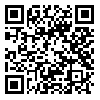BibTeX | RIS | EndNote | Medlars | ProCite | Reference Manager | RefWorks
Send citation to:
URL: http://payavard.tums.ac.ir/article-1-6193-en.html

 , Ali Sarabi Asiabar2
, Ali Sarabi Asiabar2 
 , Amir Ali Ebadi Fardazar3
, Amir Ali Ebadi Fardazar3 
 , Saeid Bagheri4
, Saeid Bagheri4 
 , Negar Yusefzadeh5
, Negar Yusefzadeh5 
 , Alireza Mazdaki6
, Alireza Mazdaki6 
 , Sadigheh Asadi2
, Sadigheh Asadi2 
 , Mohammad Hossein Ghafoori *
, Mohammad Hossein Ghafoori * 
 7
7
2- کارشناس ارشد مدیریت دولتی، مرکز تحقیقات علوم مدیریت و اقتصاد سلامت، دانشگاه علوم پزشکی ایران، تهران، ایران
3- دانشجوی رشته پزشکی عمومی، دانشکده پزشکی، دانشگاه علوم پزشکی ایران، تهران، ایران
4- دانشجوی دکتری تخصصی اقتصاد سلامت، دانشکده مدیریت و اطلاع رسانی پزشکی، دانشگاه علوم پزشکی ایران، تهران، ایران
5- کارشناس ارشد مدیریت خدمات بهداشتی درمانی، دانشکده بهداشت، دانشگاه علوم پزشکی تهران، تهران، ایران
6- کارشناس ارشد اقتصاد بهداشت، دانشکده بهداشت، دانشگاه علوم پزشکی تهران، تهران، ایران
7- کارشناس ارشد اقتصاد بهداشت، مرکز تحقیقات علوم مدیریت و اقتصاد سلامت، دانشگاه علوم پزشکی ایران، تهران، ایران ,
Background and Aim: With the assumption that health is as one of the luxury goods, therefore making efforts in reducing health spending and inflation in this section will be ineffective.
But if health is an essential service, then in the national level for better redistribution of the resources and financial protection of the households against the health expenditures will be needed. The main objective of this study was determination of income impact of health care expenditures in Tehran household in years 2011-2012.
Materials and Methods: This study was a population based survey. The instrument of data gathering was a "WHO questionnaire" which was integrated by interview with an acquainted person in each one of the 792 families who live in Tehran. The least ordinary squares, Granger causality test, Breusch-Pagan-Godfery and White heteroskedasticity test were used for data analysis. Eviews 8 software was used for running the tests.
Results: The results showed that heath is a cause for increasing income but the converse is not true. Otherwise, Health with income elasticity equal to 0.25 is an essential service, and is not perceived as luxury goods. Moreover results represented that income is not a good variable for rationalizing the variation of health expenditures.
Conclusion: Health was an essential good, and although income changes affect the expenditures of health care, but the sensitivity is not high and recommended that health policy-makers should in adoption policies such as tariff increases do a comprehensive survey because prices increase are borne by the consumers.
| Rights and permissions | |
 |
This work is licensed under a Creative Commons Attribution-NonCommercial 4.0 International License. |



